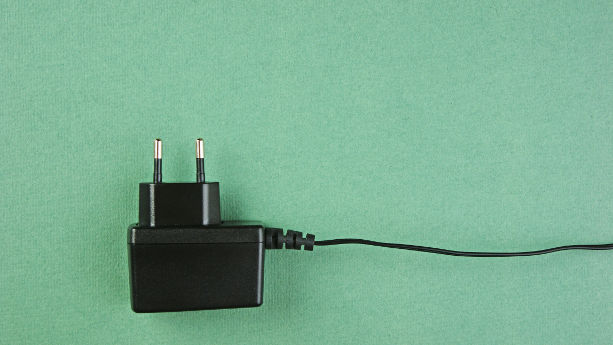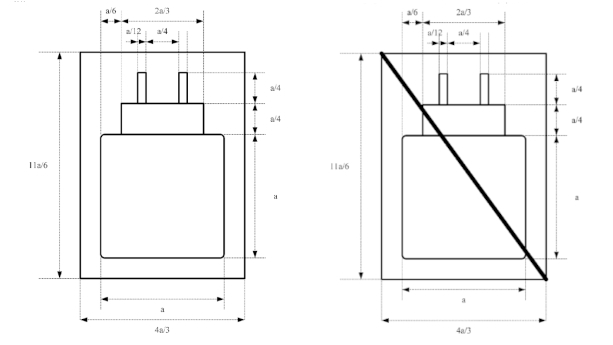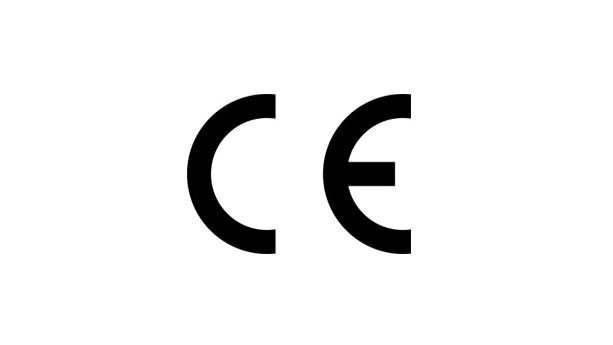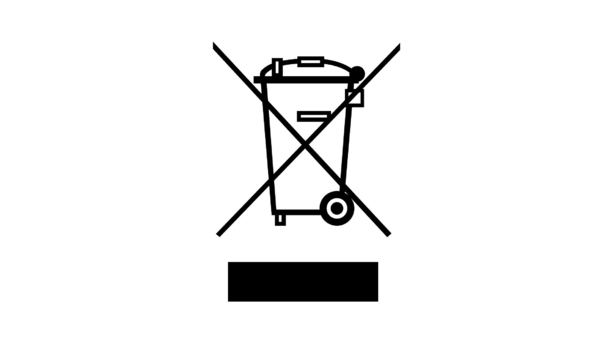
AC adapters are a type of power supply used to charge phones, laptops, and other electronic devices. These products are subject to several regulations in the European Union, including the Low Voltage Directive, the EMC Directive, and Regulation (EU) 2019/1782, which is an implementing measure under the Ecodesign Directive.
In this guide, we cover requirements of various regulations and directives applicable to AC adapters. We also explain lab testing requirements and risk factors.
Content Overview

FREE CONSULTATION CALL (US, EU & UK)
- Request a free 30-minute call with Ivan Malloci to learn how we can help you with:
- Find product requirements
- Certification and labeling
- Lab testing
Regulation (EU) 2019/1782 laying down ecodesign requirements for external power supplies
Regulation (EU) 2019/1782 is an implementing measure under the Ecodesign Directive, and sets ecodesign requirements for external power supplies.
Scope
The regulation covers external power supplies, which are defined as devices that:
a. Are designed to convert AC power input into lower DC or AC outputs
b. Are used with separate devices that make up the primary load
c. Are connected to the devices with the primary load, with cables, cords, or male/female connections
e. Have a maximum output power of 250 watts; and
f. Are used with electronic and electrical equipment such as:
- Clocks and watches
- Video cameras
- Radio sets
- Game consoles
- Toys
EN 50563 – External a.c. – d.c. and a.c. – a.c. power supplies
Harmonised standards are referenced under certain EU directives and regulations, and provide a presumption of conformity with the directive’s or regulation’s requirements.
According to the European Commission’s website, EN 50563 is the only listed standard harmonised under this regulation.
This standard sets out ways to measure the electrical power consumption of external power supplies, as well as report the results of those measurements. It covers external power supplies that:
a. Have a rated input voltage within 100–250 V AC
b. Have a single output with a maximum rated output power of 250 W; and
c. Have a maximum rated output voltage of either 230 V AC or 325 V DC
Requirements
The regulation requires importers and manufacturers of external power supplies to comply with ecodesign requirements, such as the ones listed below.
a. Energy efficiency requirements:
- No-load condition power consumption maximum value
- average active efficiency values
b. Information requirements for the nameplate:
- Output power
- Output voltage
- Output current
c. Information requirements for the instruction manual:
- Manufacturer name and address
- Model identifier
- Technical specs (e.g. voltage, efficiency)
d. Measurements and calculations, which should be made using harmonised standards or other reliable methods.
You can find more details in Annex II of the regulation.
Low Voltage Directive (LVD)
The Low Voltage Directive (LVD) sets safety requirements for importers and manufacturers of electronics and electrical devices that operate within specific voltages.
Requirements
This directive aims to ensure the safety of electrical devices that operate with an input or output voltage of:
- 50–1000 V for AC, or
- 75–1500 V for DC
It applies to most AC adapters as their input voltage usually ranges between 110 V and 240 V.
Harmonised standards
We list below a few standards harmonised under the Low Voltage Directive that are relevant for power supply units:
a. EN 61204 – Low-voltage power supply devices, d.c. output – Performance characteristics
b. EN IEC 61558-1 – Safety of transformers, reactors, power supply units and combinations thereof – Part 1: General requirements and tests
c. EN 61558-2-26 – Safety of transformers, reactors, power supply units and combinations thereof – Part 2-26: Particular requirements and tests for transformers and power supply units for saving energy and other purposes
EMC Directive
The Electromagnetic Compatibility (EMC) Directive sets requirements to ensure that electronic devices do not generate, or are not impacted by, electromagnetic interference.
Requirements
The EMC Directive aims to regulate the electromagnetic compatibility of various electronic and electric devices to keep side effects caused by their radiations under a certain limit.
It does that by setting requirements that reduce disturbance and improve immunity of covered devices.
Harmonised standards
Here are a few standards harmonised under the EMC Directive:
a. EN 61204-3 – Low voltage power supplies, d.c. output – Part 3: Electromagnetic compatibility (EMC)
b. EN IEC 61000-6-1 – Electromagnetic compatibility (EMC) – Generic standards. Immunity standard for residential, commercial and light-industrial environments
RoHS Directive
The Restriction of Hazardous Substances (RoHS) Directive specifies the maximum levels of restricted substances in electrical and electronic products, including AC adapters.
Requirements
The RoHS Directive restricts the use of ten dangerous substances, which include heavy metals and phthalates, in electronics and electrical devices and equipment. We list here four of those substances:
- Lead
- Mercury
- bis(2-ethylhexyl) phthalate (DEHP)
- dibutyl phthalate (DBP)
AC adapters may contain restricted substances in the solder, batteries, or metallic parts. As such, you need to make sure that every part of your AC adapter complies with RoHS requirements.
RoHS Components
RoHS compliance starts at an early stage. You must inform your supplier about the RoHS requirements before mass production. For AC adapters, you shall only use RoHS-compliant components.
Radio Equipment Directive (RED)

The Radio Equipment Directive (RED) establishes EMC, safety, and radio spectrum requirements for radio equipment. As far as we know, it only covers AC adapters if those products have wireless capabilities.
It also sets the following requirements for some types of radio equipment:
a. Incorporate USB Type-C receptacles. This, in turn, necessitates adapter charger cables to have USB Type-C compatibility
b. Include a label that specifies if the equipment comes with a charger or not and what are the specifications (e.g. Watt)
CE Marking

The CE marking indicates compliance with the requirements of CE marking directives and regulations, which include the above-mentioned directives:
- Ecodesign Directive
- Low Voltage Directive
- Electromagnetic Compatibility Directive
- RoHS Directive
- Radio Equipment Directive
The size and format requirements regarding the CE marking are standardised, meaning you cannot invent or alter the dimensions and presentability of a CE marking to your liking.
Traceability information
The CE directives that have been mentioned in this article (e.g. Low Voltage Directive) requires the following traceability information:
- Company name or trademark
- Postal address
- Product batch, type, serial number
- Contact information
In general, this information should be affixed in the electronic device. When this is not possible, it should at least be affixed on the packaging and the documentation that comes with the device.
CE Documentation
Besides the CE marking and traceability information, you are required to issue the Declaration of Conformity (DoC), user instructions and technical documentation for AC adapters to support CE compliance.
Declaration of Conformity (DoC)
The DoC is the document in which the manufacturer states that the product satisfies all relevant requirements of applicable CE directives and regulations. The DoC should at least cover the information below:
- Product identification (serial number, model, or type)
- Manufacturer’s name and address
- Statement of responsibility
- Object of declaration (may include image for traceability purposes)
- List of applicable EN standards and directives
- Notified body information (where applicable)
- When and where the declaration was issued
You should expect DoC requests from governing bodies, consumers, and even retailers in the EU.
User instructions
User instructions are essential for AC adapters. You must draft instructions with information such as the following:
1. Instructions on how to use the product
2. Identification of components in AC adapters
3. Safety instructions
4. Instructions on how to dispose of the product
Note that Regulation (EU) 2019/1782 lists information that should be added to the instructions, which are specific for power supplies.
Technical documentation
The technical documentation describes all relevant specifications and designs according to relevant requirements.
You should create a file for AC adapters that contains information such as the following:
- Bill of materials
- Design drawings
- Label files
- Packaging files
- List of applied standards and directives (e.g., LVD, EMC, and RoHS)
- Test reports
- Risk assessment
Test Report
You receive a test report if your product passes testing. The test report proves your product’s compliance with the relevant requirements. You must include your test report in your technical documentation.
WEEE Directive

The WEEE Directive aims to reduce and prevent the waste of electronic and electrical equipment, such as AC adapters, by setting goals regarding the collection, recovery, and recycling of such waste.
It requires waste electronic and electrical equipment to be collected separately and treated properly.
The directive also requires distributors to register with their relevant member state authorities, as well as label their products with the mandatory WEEE symbol.
REACH
REACH regulates imported and manufactured chemicals and substances in the EU that may harm consumers or the environment. The regulation also regulates products that might contain those substances.
Here are a few restricted substances from Annex XVII to REACH that might be found in AC adapter components:
- BPA (4,4′-isopropylidenediphenol) – 0.02% by weight
- DEHP – 0.1% by weight
- BBP – 0.1% by weight
Lab Testing
Various regulations require AC adapters to undergo lab testing to ensure they are safe to use. We list below a few examples of regulations and why they require testing:
a. RoHS Directive – Testing is necessary to ensure that chemicals and heavy metals in products comply with relevant substance restrictions.
b. Low Voltage Directive – Testing is necessary to ensure equipment can safely operate between certain voltages.
c. EMC Directive – Testing is necessary to ensure the electromagnetic compatibility of products.
When your product passes lab testing, you receive a test report that proves your product’s compliance with the requirements.
Some directives, such as the Low Voltage Directive and the RoHS Directive, mandate that you provide a test report as part of the required technical documentation to prove your product complies with their requirements.
Lab testing companies
Here are a few companies that offer to test AC adapters against EU regulations:
- Bureau Veritas
- Intertek
- Eurofins
- QIMA
Risks
Phone chargers, laptop chargers and other AC adapters manufactured outside the EU are not always made to comply with the Low Voltage Directive and other applicable requirements. There are plenty of non-compliant AC adapters on the market, meaning that you must be careful when purchasing chargers or devices that are pre-packed with them. In fact, non-compliant AC adapters are one of the main causes of recalls in the EU as of today.
Unless your supplier can provide verifiable test reports and other compliance documents, assume that the AC adapter is non-LVD compliant. We normally recommend importers to only ship their products with brand name chargers from Samsung, TDK and the likes. This, in turn, requires that you procure the chargers from trusted suppliers, as there are fake and non-compliant chargers on the market.
You can use the EU’s Safety Gate system to find examples of power supplies or similar products withdrawn from the market because of their non-compliance with the Low Voltage or other directives. Here are some examples:
- LED power supply
- Power supply
- Battery charger

















Hello Team,
What about Regulation (EU) 2019/1782 for external power supplies?
This article is scheduled for an update and we will take Regulation (EU) 2019/1782 into consideration then
if i want to sell the product with an American AC plug type
Can I apply the safety(CE) also? or it must be added an EU converter?
if the Charger alone with American AC plug type to pass CE safety. is there any difference on the document, mark…?
Hi Walter,
CE marking is not applicable in the United States, to begin with, so I don’t see why it would be relevant in this case.
That said, I don’t know if the testing procedure requires using an EU plug